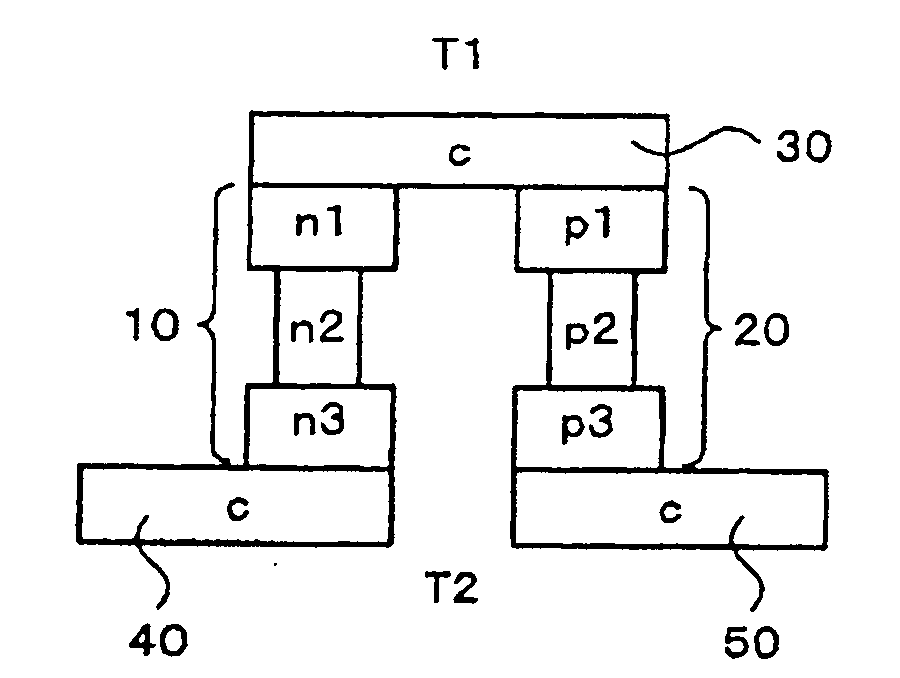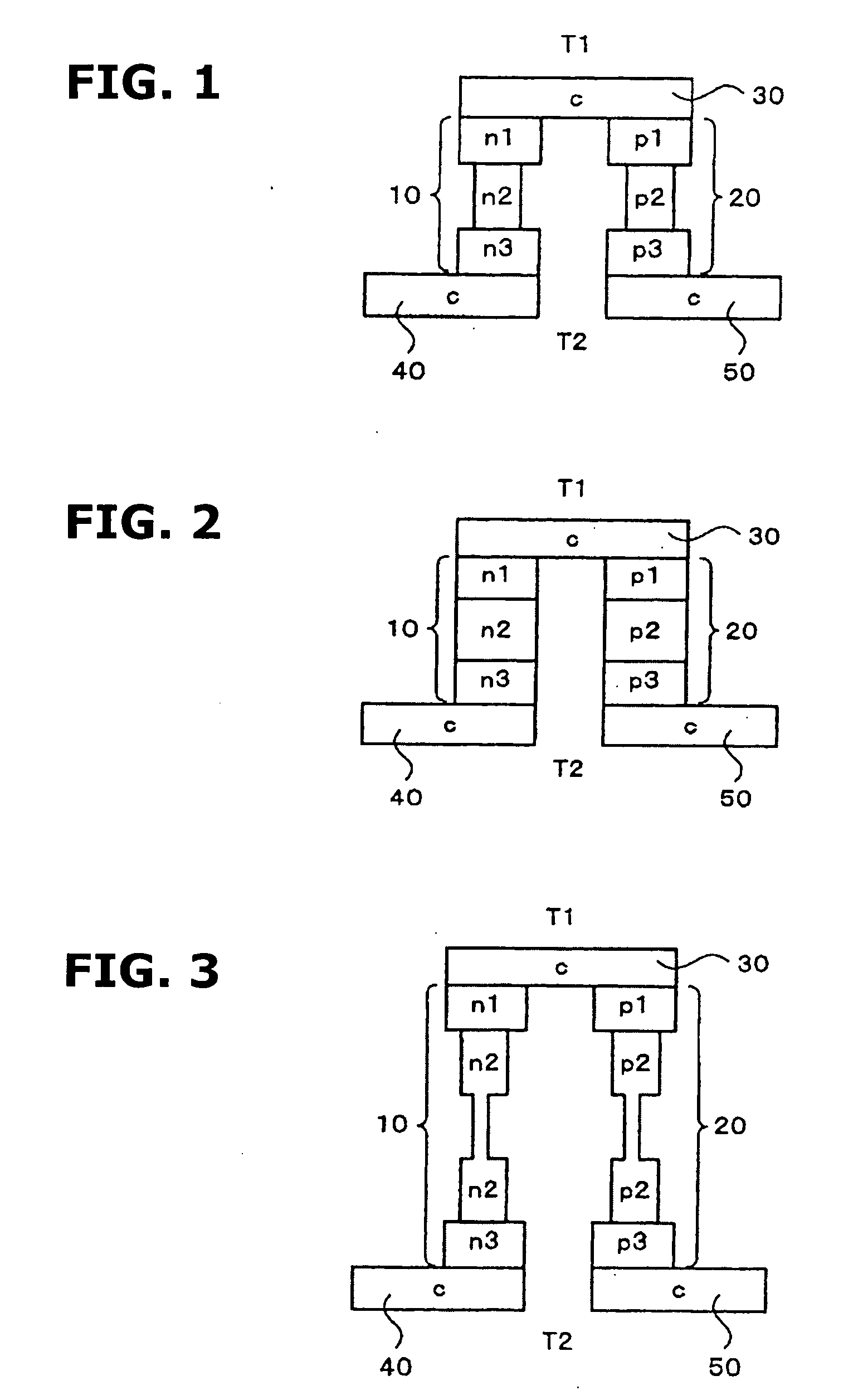Structure of Peltier Element or Seebeck Element and Its Manufacturing Method
a technology of peltier elements and manufacturing methods, applied in the direction of thermoelectric devices, photomechanical devices, instruments, etc., can solve the problems of adverse effects on the environment, decrease in adverse effects on the natural world, etc., to reduce the movement of thermal energy, increase the use efficiency of thermal energy, and reduce the manufacturing cost of the element
- Summary
- Abstract
- Description
- Claims
- Application Information
AI Technical Summary
Benefits of technology
Problems solved by technology
Method used
Image
Examples
first embodiment
[0068]Hereinafter, a structure of a Peltier element or a Seebeck element according to the present invention and its manufacturing method will be illustrated with reference to the drawings. FIG. 1 is a diagrammatic view showing a structure of a Peltier element or a Seebeck element according to the present invention.
[0069]As shown in FIG. 1, a first conductive member (a n-type semiconductor and so on) 10 having a predetermined Seebeck coefficient is composed of both end parts n1 and n3 thereof, and an intermediate part n2. Moreover, a second conductive member (a p-type semiconductor and so on) 20 having a Seebeck coefficient different from the Seebeck coefficient of the first conductive member is composed of both end parts p1 and p3 thereof, and an intermediate part p2.
[0070]The intermediate parts n2 and p2 of the first conductive member 10 and the second conductive member 20 have cross sections which are smaller than cross sections of the both end parts n1, n3, p1 and p3. Accordingly...
second embodiment
[0075]In this way, in FIG. 1, the intermediate parts of the first conductive member 10 and the second conductive member 20 have the cross sections which are smaller than the cross sections of the both end parts thereof, so that the thermal conductivities become small. In the present invention, for example, as shown in FIG. 2, the first conductive member 10 and the second conductive member 20 have the same cross sectional shape. It is optional to use, as material of the intermediate parts n2 and p2, for example, material with a thermal conductivity which is smaller than a thermal conductivity of both end parts n1, p1 or n3, p3, such as amorphous silicon and polysilicon.
third embodiment
[0076]Moreover, in the present invention, as shown in FIG. 3, the intermediate parts n2 and p2 of the first conductive member 10 and the second conductive member 20 are further divided to form constrictions (for example, to form narrow width portions in the intermediate parts of the first conductive member 10 and the second conductive member 20). That is, it is optional to form shapes with small cross sections by dividing the intermediate parts n2 and p2 itself into a plurality of parts. Thereby, it is possible to further decrease the thermal conductivities of the intermediate parts n2 and p2, and to decrease the semiconductor material. Consequently, it is possible to further increase the temperature difference between the high temperature side and the low temperature side.
[0077]In the Peltier / Seebeck elements according to the embodiments of the present invention as shown in FIGS. 1˜3, for providing function to enhance the Peltier effect or the Seebeck effect, the first conductive m...
PUM
 Login to View More
Login to View More Abstract
Description
Claims
Application Information
 Login to View More
Login to View More - R&D
- Intellectual Property
- Life Sciences
- Materials
- Tech Scout
- Unparalleled Data Quality
- Higher Quality Content
- 60% Fewer Hallucinations
Browse by: Latest US Patents, China's latest patents, Technical Efficacy Thesaurus, Application Domain, Technology Topic, Popular Technical Reports.
© 2025 PatSnap. All rights reserved.Legal|Privacy policy|Modern Slavery Act Transparency Statement|Sitemap|About US| Contact US: help@patsnap.com



